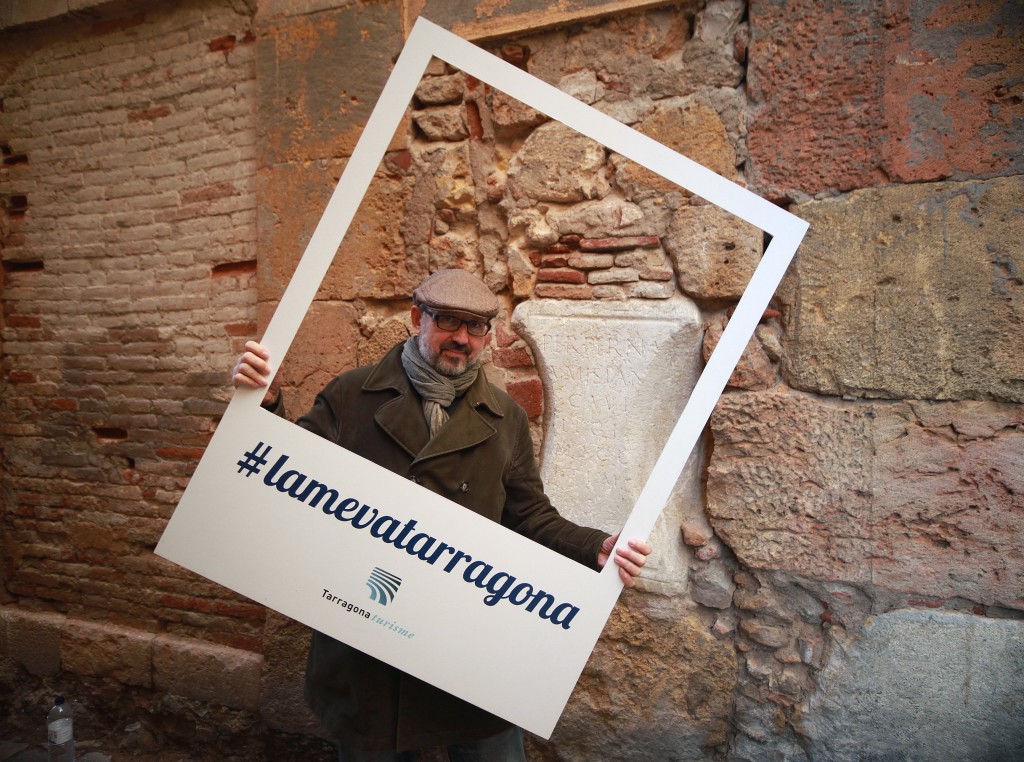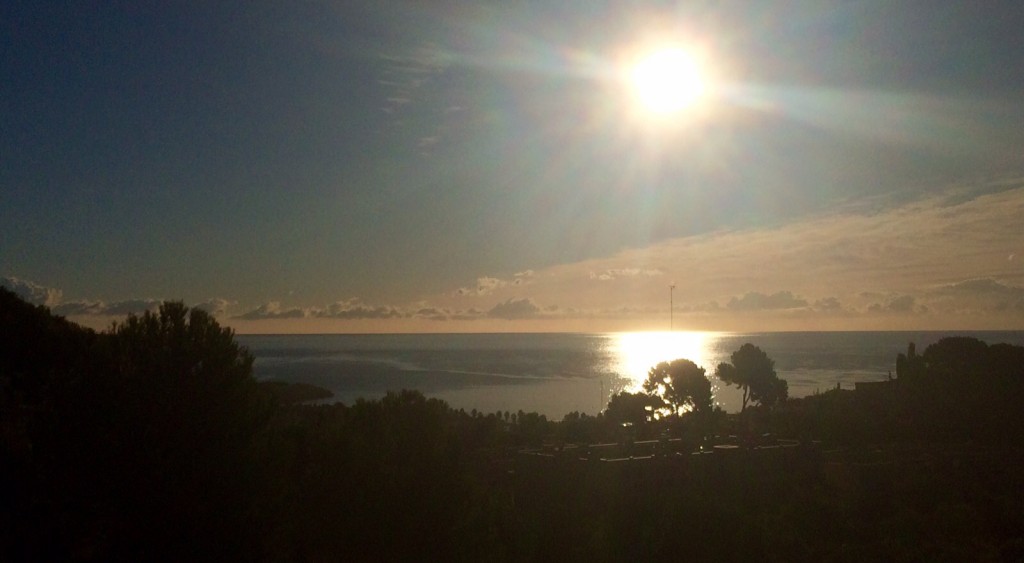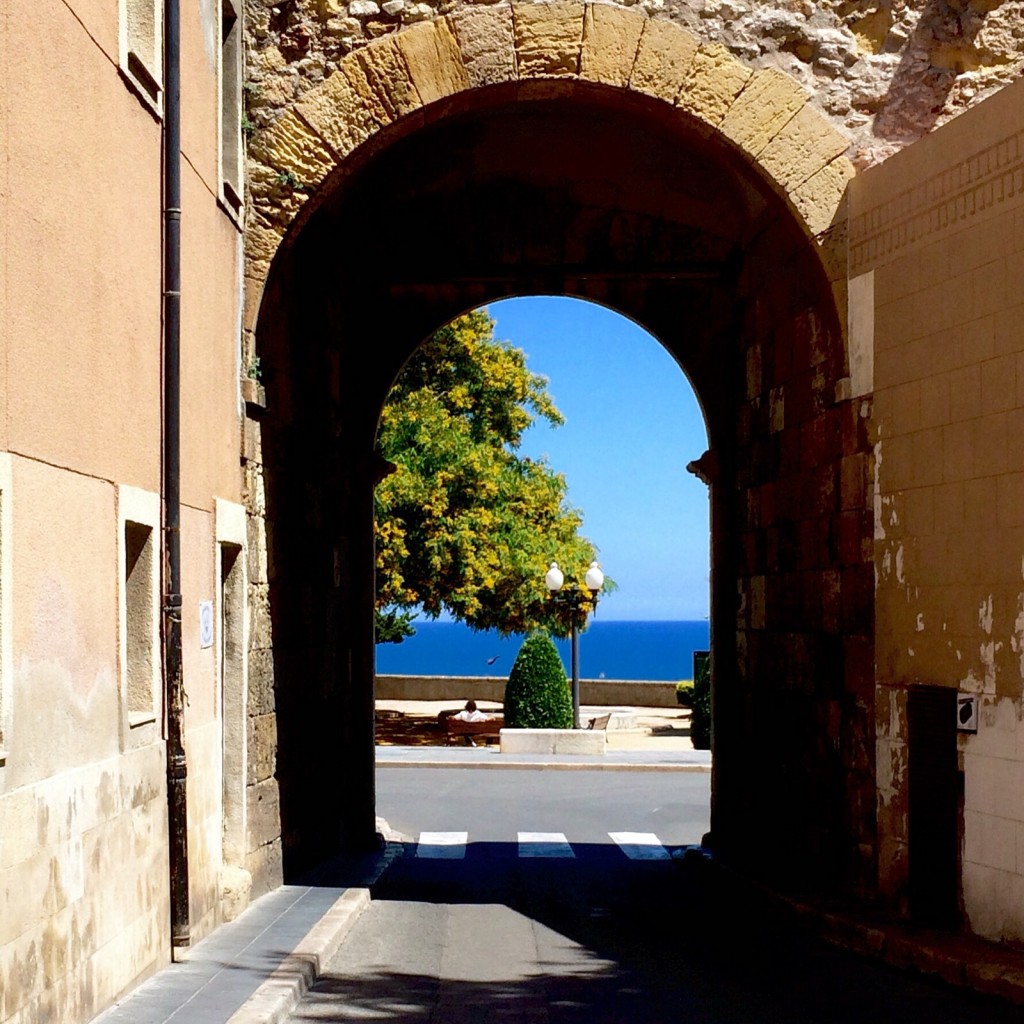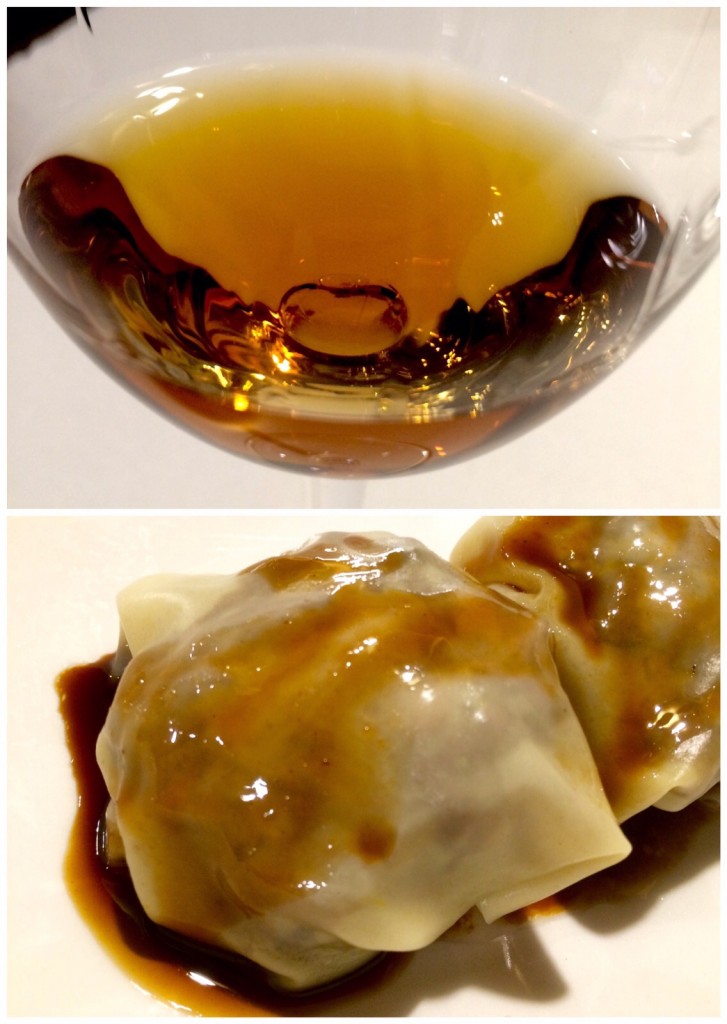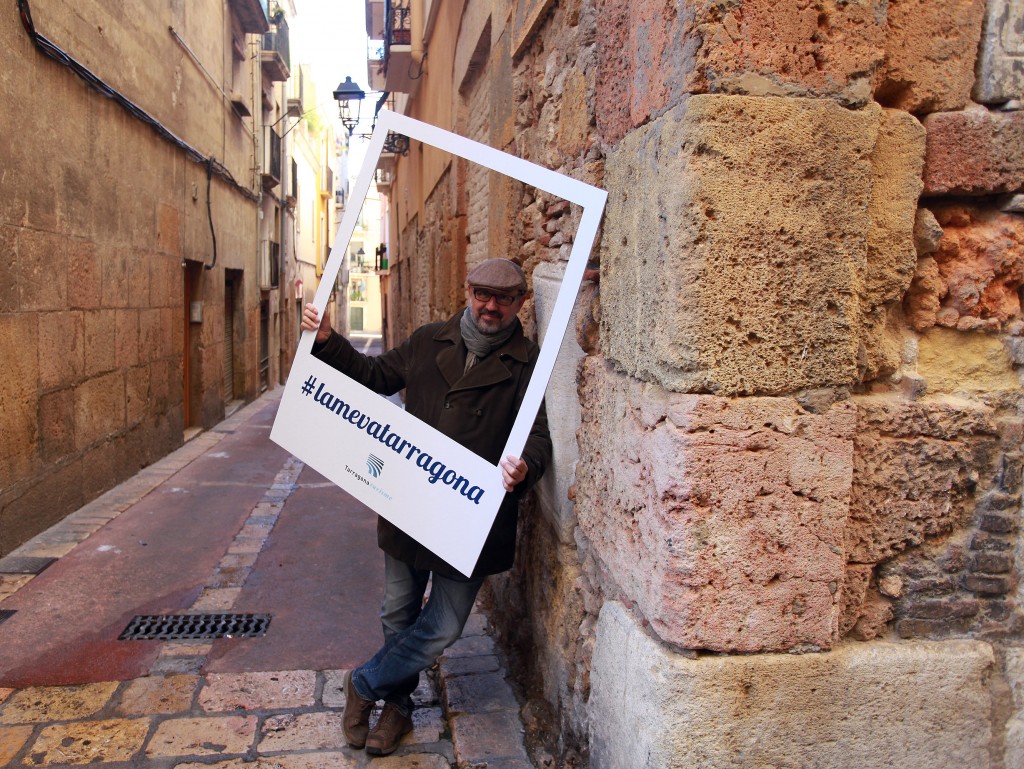This month’s guest to tell us about #lamevaTarragona (literally, my Tarragona) is an illustrious fan of Tarragona, what Italians would call città elettiva, and which he enjoys with all his senses. Joan Gómez Pallarès (Igualada, 1960) is, among others, Doctor in Classic Philology, director of Institut Català d’Arqueologia Clàssica (ICAC) and author of the wine blog De Vinis, which we truly recommend if you’re a wine and food lover. In fact, the three photographs Joan Gómez provided to show us his most personal and private Tarragona are very related indeed to these three jobs, passions or virtues of his curriculum.
The first picture he chose to share with us shows a present landscape that takes us back to the past: “This is what I see when I make it to Tarragona every day, from Mare de Déu de la Salut and the Torroja car park. I’m talking about the views you get over the Marenostrum up to Torre de la Móra. I really love it because this is where I get Tarragona’s light and brightness at its best. Standing here, I can imagine the way Valerius Avitus –owner of the Roman village of Munts, in Altafulla– had to walk every day through Via Augusta. I really like when all this pops into my mind and the nostalgic feeling I get about the Tarragona of the 2nd century, up from a similar perspective people would have had back then”.
The second photo Joan Gómez Pallarès has chosen is almost a symbol. “This is Portal de Sant Antoni. There are a lot of people who think this is one of the Roman entries to the city. In fact though, it’s from the 18th century, and therefore, it’s not Roman. It was made using stones from Savinosa beach, that means it was made using materials they’d find around here and it represents, somehow, a will to reuse. And so those stones were taken to build a spot that provides the most accessible way of admiring the sea from within the walls. Moreover, this is also a symbol of the inhabited wall, of the people that live near it and those reusing Roman materials throughout history”.
“The third picture I’ve chosen shows a plate and a glass of wine; a dish from Restaurant AQ, run by Ana and Quintín. It’s one of the establishments I love eating the most in Tarragona. I chose it because I think Tarragona is a sort of square, a gastronomic location where people have really enjoyed throughout the years. We found written material, from the 1st century, that suggests Tarragona had a great standard of living; and today, we can tell this standard remains untouched. To me, one of the things that better symbolize a high standard of living is food. Besides, Tarragona is a privileged location when it comes to wine. We have not just one Designation of Origin named after the city, but up to seven other designations within the Tarragona territory. Therefore, I think the combination of a glass of wine and good food seems to be the perfect recipe to describe my favourite and most beloved Tarragona”.
We end the Joan Gómez Pallarès chapter of #lamevaTarragona in one of his most personal locations, just a few meters from Institut Català d’Arqueologia Clàssica (ICAC), in Carrer Merceria, just by the Cal Corderet chandlery. It’s a space that gathers a number of Roman epigraphs and, since Joan is a specialist in this field, we ask him to provide his last considerations. “These are inscriptions that are not on their original location. People have been reusing stones for ages and this is yet another of the symbols of Tarragona. They have been used to build houses and then, among other projects, we study, edit, publish and comment on them in the ICAC. The inscriptions in Tarraco were studied and publish by a wise man, Géza Alföldy, who, unfortunately, passed away some years ago. However, we are still part of this tradition. In the ICAC, which is located on a historical spot, just by Plaça del Fòrum, we study various items that go from the protohistory to the late antiquity, and in the core of this study there’s some of the Roman Tarraco, and one of the symbols of the Roman Tarraco are, in fact, the inscriptions. Inscriptions are symbols of life, of daily life, of what people do, and what people say and live; and this is also part of my job. I’m not just the director of ICAC, but also a researcher, and so I spend most of my time studying these inscriptions; not so much the ones we saw today, but metric inscriptions; that is, poetry engraved on stones by Romans. And this is part of my daily life in here nowadays”.
Text: Ivan Rodon (@irodon on Twitter)
Pictures: Pere Toda (@ptodaserra on Instagram)
Translation: Artur Santos (@artur_1983 on Twitter)


